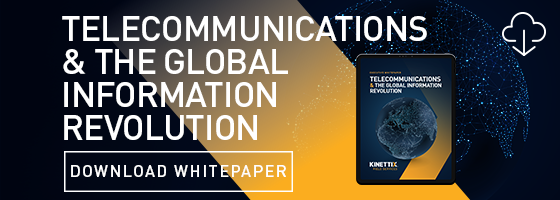Let’s face it, in the world of telecommunications, good enough isn’t good enough.
Telecommunications firm Advantix addressed the issue of “good enough”:
“Some companies cope with the brutal pace of mobile and technological innovation by cobbling together their solutions piecemeal as a particular need or problem arises. These companies squeak by with “good enough” mobility management, often to the detriment of their employees’ productivity and the size of their mobile telecom bills,” Advantix laments.
The telecom landscape has morphed into a world where the line between work and personal has blurred, as people take their mobile devices everywhere and use them for everything.
“They know their mobile ecosystem needs to look to the future. That ecosystem needs to be adaptable and integrate neatly with many carriers, and operating systems, while also being easy to deploy, update, and manage at a high level,” Advantix opines.
Too often, telecoms are struggling to adapt to this seamlessness that customers expect.
Even IBM recently weighed in on the issue:
“Generally, telecommunications is not considered a role model industry for positive customer experiences; no CSPs were cited as leaders on any customer experience scorecard we consulted. This reputation has affected customer loyalty in a negative way.”
So “good enough” needs to be replaced with “better than”, but how do you do that?
Your firm needs to partner with entities that can help elevate customer experience on the back end and on the front end, and worldwide. Here are some ways to turn “good enough” into “better than.”
24/7 Service: If you have a telecom project that runs into an issue and customers are impacted, you need to be able to address the problem immediately and move on. You want access to expertise that can swoop in and fix the issues and move on. Partnering with an entity that is “always on” can do that.
Global reach: Do payment processing systems go down at your retail outlets in Indonesia? You want to work with a partner that can come in and fix your issues while quickly navigating the local labyrinth and landscape of laws and culture. That, more than almost anything, is more than good enough — that’s “better than.”
Scalability: You want the ability for a computing or telecom process to be used or produced in a range of capabilities. Nothing is more of a turn-off to a customer than approaching them with solutions that are one-size fits all. One size doesn’t exist in telecom anymore. Processes must be tailored to the customer and the situation.
Training: You want to partner with a global-facing entity that can offer solutions in account configuration, talent curation, and payments and reporting. Proper training of contractors and employees in these areas, tailored to the local infrastructure, goes above and beyond “good enough.”
Field Service: Sometimes problems can be solved remotely, and when that is done, that can be a cost-effective way to troubleshoot. But often, a telecom project requires a hands-on presence. You want a trusted contingent workforce for multi-site or isolated installations, repairs, and upgrades.
Too often, customers have viewed telecoms with disdain and implementing these “better than” concepts will change that.
The image problem that has plagued telecoms is nothing new. As far back as 2012, Renodis was lamenting customer perception”
“‘Telecommunications’” is not exactly a four-letter word, but most IT Execs and CIOs usually think of several such words when the topic comes up regarding how to manage toxic telecom. Why? In one word: Dysfunctional. In a few words: Not Strategic, not customer-focused, not fun.”
Renodis counters that the antidote to good enough is: “having a partner who has relationships with the carriers, the tools to accelerate outcomes, and the people who know how to get it done because they do it every day…that is the antidote to ‘good enough’ thinking.”
We like Renodis’s antidote. But there’s one more ingredient they could have added, and that is the “seamless relationship.” You want to approach customer relationships with a sense of seamlessness that cements esprit de corps. You may partner with an entity that sends a contractor out to your site to fix a problem, but you want them to treat your business like it’s theirs — because it is. In a growing telecom ecosystem, everyone feeds off everyone else. The more winners, the better for everyone. When optimization occurs for everyone, then telecom toxicity that is “good enough” truly becomes “better than.”






